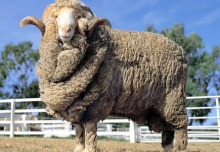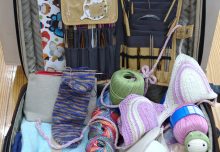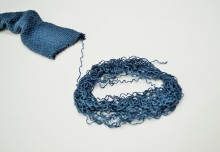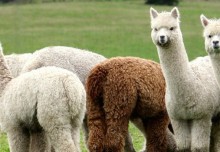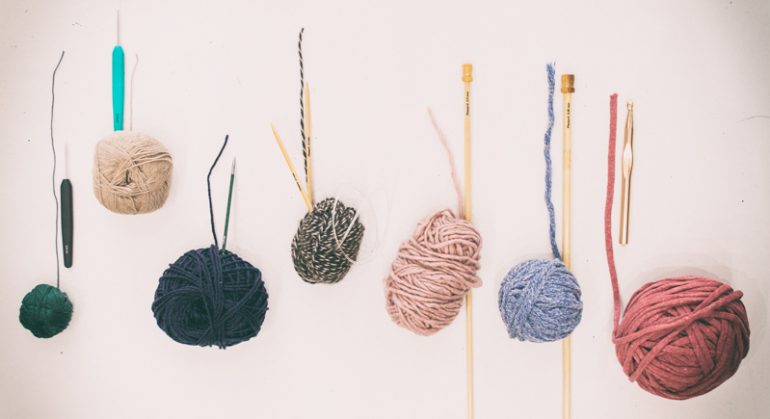
How much yarn will I need?
It is perhaps the very first thing we can possibly think of before starting our next knitting or crocheting project. For sure it is the most common question when buying yarn. No matter how simple this question sounds, its answer though is not that simple and may even remain a mystery until the project is finished.
Yes, yes, I know….I think I already heard someone saying: “I use 200 grams to knit a scarf!”. This is way too simple for knitting or crocheting to be honest, no matter how precise this could be for let’s say, hmm, cooking! Why is that so?
Actually, what we need to realize here, is that when knitting or crocheting, we create a surface. This is what we must have in mind and take into consideration when making yarn estimates. Some plenty decades ago, when yarns where of specific only weight and blend, the actual yarn ball weight would be helpful enough to estimate yarn for your project. Guess what, this cannot be applied today with the huge yarn variety of blends and yarn weights that exist on the market. Of course the ball weight is always printed on the label. But this is the standardized ball or hank weight and should not taken into consideration when calculating yarn estimates. On the same label you will also find printed the total length, yarn weight (thickness), recommended needles and yarn gauge. The combination of all these data will help you calculate your yarn estimate.
Using our experience, we managed to gather all these data to the following tables in metric and imperial system to help you calculate yarn estimates for your projects every time.
You simply go to the yarn weight row you want to use and get the yarn estimate for the knit project you want to make. Afterwards simply divide this yarn estimate by the total length of the yarn ball you will use and you get the number of yarn balls or hanks you will need. All you need is to use the following type: yarn estimate/yarn ball length=yarn balls.
The yarn estimates mentioned in those tables are valid when taking into consideration the following:
- All yarn estimates are in meters or yards (length) for knit projects in stockinette stitch.
- Crochet usually requires at least 30-40% more quantity (meters or yards) for the same project.
- For textured knits (e.g. cabled) and multicolored patterns (striped, fair isle) allow a 15-20% extra quantity (meters or yards) for the same project.
- For short-sleeved sweaters allow 20% less quanity (meters or yards), while for sleeveless sweaters or children’s garments allow a 25-30% less.
Always bear in mind that using a needle or hook in size other than the recommended for the yarn you use, will always affect the yarn estimate. Even the fact that you may use different types of needles (DPNs, single pointed, circular) for the same project affects your yarn estimate every time. Also, not everybody knits or crochets with the same tension. Even your mood or the weather and the environment can have an impact to your knitting gauge from day to day and thus on the yarn estimate.
Below we illustrate the use of these data in the tables and the calculation of the yarn estimate in some simple, practical examples.
Example 1: Let’s assume that we want to knit a scarf with dimensions 15×150 cm, in stockinette stitch, using a DK yarn, on size 4.οοmm needles, with a 24 sts/10cm yarn gauge and the yarn comes in balls of 115 meters. The yarn estimate for such project is 340 meters. So, for the scarf we will need 340/115=2,96 which is 3 balls of the specific yarn.
Example 2: Let’s now assume that we want to knit the exact same project as in Example 1, only that now we want our scarf to be 30×150 centimeters. This is double the width of the scarf we knitted in the first example. Simply, it is like knitting the previous scarf twice. So, for this scarf, using the same yarn we will need 3×2=6 yarn balls.
Example 3: Let’s now assume that we want to make the exact same project as in Example 1, only that now we want to crochet our scarf. So, now using the calculations from Example 1 we just add and extra at least 40% and we will get a pretty accurate yarn estimate for it. By adding an extra 40% to the 3 yarn balls we need for knitting we get 1,2 balls, total 3+1,2=4,2, which is 5 balls of yarn for the same project when crocheting.
Tip: All numerical data presented here are just estimates and we cannot assert that will perfectly match all projects, since not all knitters and crocheters use the exact same tension on their hands. Furthermore garments size modifications or textured knitting/crocheting can significantly affect yarn estimate up or down. You are always advised to knit your own gauge before proceeding with your project, in order to more accurately calculate yarn estimate using the table presented here. Last, but not least, always get the total yarn quantity you need before starting your project. This way you avoid any color mismatches that may occur due to different color batches. You also avoid texture mismatches in case you do not get enough yarn from the beginning and the yarn you use gets of stock and you use substitute.
We now think that it is very simple for everyone, using this table to calculate the yarn estimate for almost any project with great accuracy. Enjoy knitting your next project!



